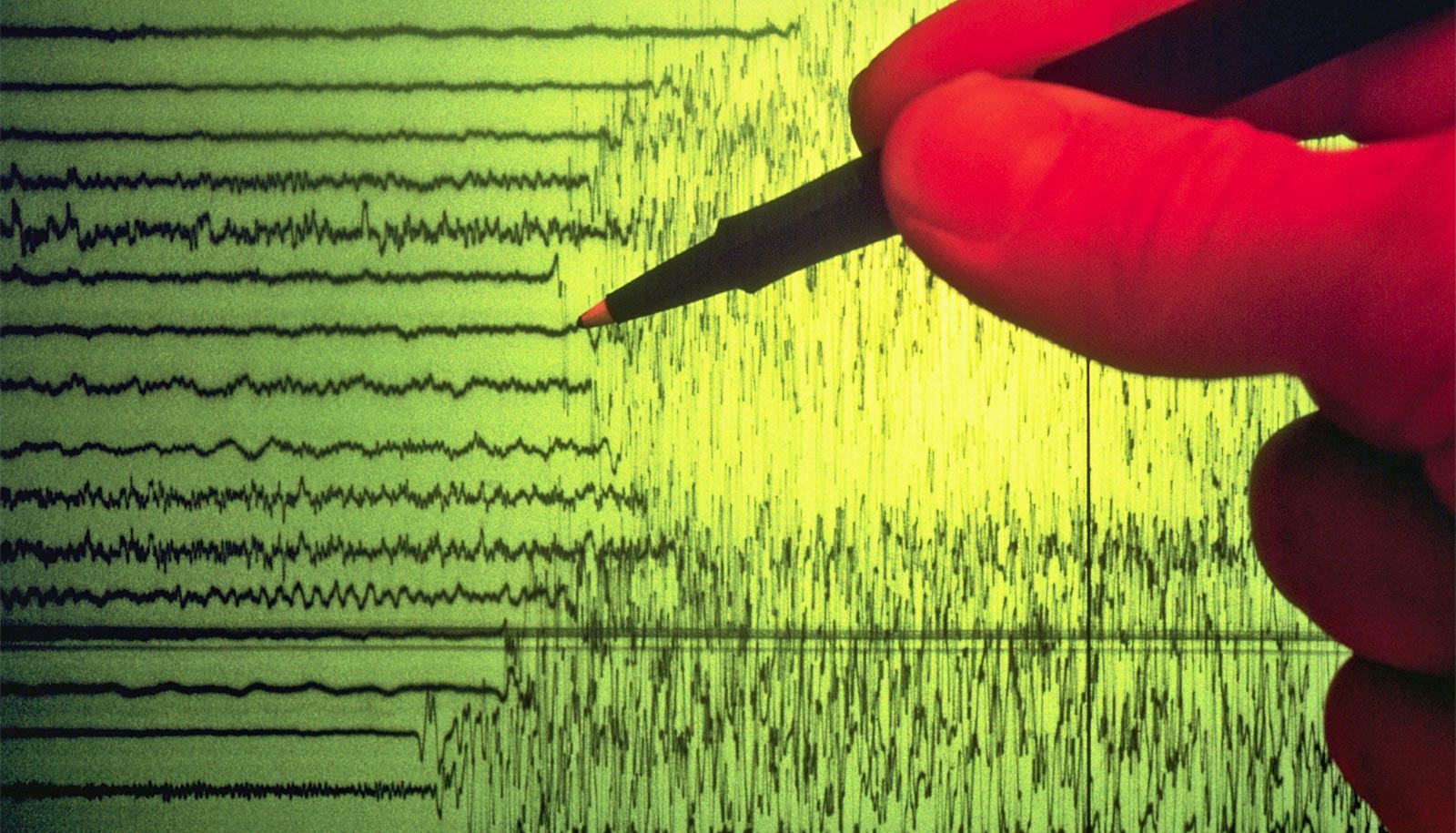Deep tremors, a type of “slow earthquake” that releases energy over a period of hours to months, may lead to regular earthquakes, researchers report.
The finding could help seismologists better forecast some strong earthquakes set to occur within a certain window of time, enabling warnings and other preparations that may save lives.
“While the build-up of stress in the Earth’s crust is largely predictable, stress release via regular earthquakes is more chaotic in nature, which makes it challenging to predict when they might occur,” says Kevin Chao, a data science scholar in the Northwestern University Institute on Complex Systems (NICO). “But in recent years, more and more research has found that large earthquakes in subduction zones are often preceded by foreshocks and slow earthquakes.”
Chao and his colleagues began their work several years ago by turning to a region within Taiwan, home to approximately 100 seismic stations that have continuously recorded ground motion for years. It was there the team noticed deep tremors, a type of slow earthquake that typically recurs in days- or weeks-long cycles.
“Deep tremor is very sensitive to small stress changes,” Chao says. “So, we decided to use them as stress meters to monitor local variations in stress build-up and release before and after large earthquakes.”
To detect and monitor this deep tremor activity, Chao’s team developed a sophisticated set of algorithms and applied it to data from 10 seismic stations in Taiwan. They discovered that a deep tremor started to change its behavior about two months before the occurrence of a 6.4-magnitude earthquake in March 2010 in southern Taiwan. The tremor’s duration, for example, increased by two-fold before this event and continued to increase afterwards.
Although deep tremors were first reported in 2002, scientists have not found many cases in which behavior changed before large earthquakes.
Slow earthquakes could reveal how tsunamis start
“After the 6.4-magnitude earthquake occurred, we noticed a potential to study deep tremor near the event,” Chao says. “We identified the increase in tremor duration three weeks before the earthquake, but we initially could not draw conclusions because tremor rates increase all the time and for different reasons.
But three years after the 6.4-magnitude, Chao and his colleagues noticed that their observations of tremor activity coincided with nearby a GPS recording, which indicated a flip in the direction of ground motion near tremor sources.
By combining data from earth observatories, such as GPS and seismic stations, with statistics and a series of algorithms, the team showed that changes in deep tremor patterns could signal an impending earthquake nearby. To further test the finding, Chao examined four additional earthquakes and discovered that similar precursory patterns did exist. He and his colleagues hope that this work will inspire more data-driven research in the seismology field.
“Much more data analysis of these tiny but fascinating tremor signals is necessary,” he says, “before mid- to short-term earthquake forecasting become reliable.”
Earthquakes can cause distant undersea landslides months later
The National Science Foundation supported the research.
The researchers published their work in the Journal of Geophysical Research: Solid Earth.
Suzan van der Lee, a professor of earth and planetary sciences in Northwestern’s Weinberg College of Arts and Sciences, also contributed to the work.
Source: Amanda Morris for Northwestern University



